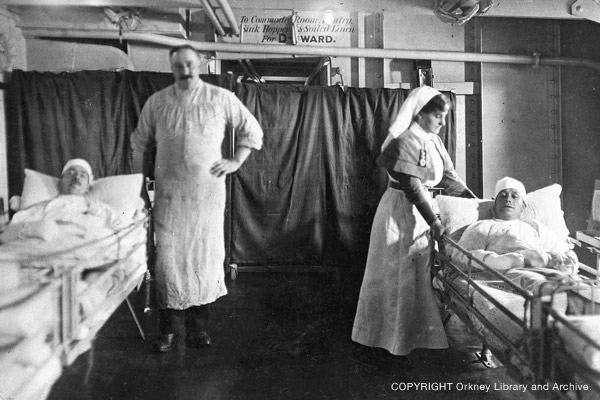History of HMS Vanguard
HMS Vanguard came to a tragic end on 9 July 1917 while anchored in Scapa Flow. An internal explosion destroyed the ship, killing 843 of the 845 men on board at the time.
The vessel was a St Vincent Class battleship built in Barrow-in-Furness. The class consisted of three ships, the other two being HMS Collingwood and HMS St Vincent.
HMS Vanguard was laid down on 2 April 1908 and launched on 22 February 1909. She was the eighth ship to bear the name and was commissioned into the Royal Navy at Devonport on 1 March 1910.
She served in the I Battle Squadron during 1914, then in IV Battle Squadron at the Battle of Jutland in May 1916. The ship was involved in action throughout the battle, but did not suffer any damage or casualties. Beyond the Battle of Jutland the ship was involved in very little significant action.
On 9 July 1917, Vanguard was anchored in Scapa Flow. Nothing seemed amiss. At 11.20pm the entire ship was destroyed in an instant by an internal explosion. Neighbouring ships were showered with wreckage and human remains.
A total of 845 men were on board. Only three survived the explosion: Lieutenant Commander ACH Duke, Marine J Williams and Stoker 1st Class FW Cox. Lieutenant Commander Duke later died of his injuries (RBLS, n.d).
In what could be described as a small blessing amongst such a grievous loss of life, a number of officers were attending a concert on another ship at the time and thus survived (RBLS, n.d).
The Court of Inquiry attributed the tragedy to the internal explosion of faulty cordite thought to be in either P or Q magazine (ammunition storage area).
On 12 September 1975 a detailed investigation carried out by the Royal Navy's Command Clearance Diving Team confirmed that the original explosion destroyed virtually all the explosive ordnance on board and blew the wreck apart.
The bodies that could be recovered now lie in Lyness Royal Naval Cemetery, Hoy, where there is also a memorial.
The wreck itself lies in 14.2 metres of water, well south of the Barrel of Butter, to the north of the island of Flotta and to the west of Calf of Flotta. Today the wreck is afforded statutory protection as a designated war grave under the Protection of Military Remains Act 1986.










